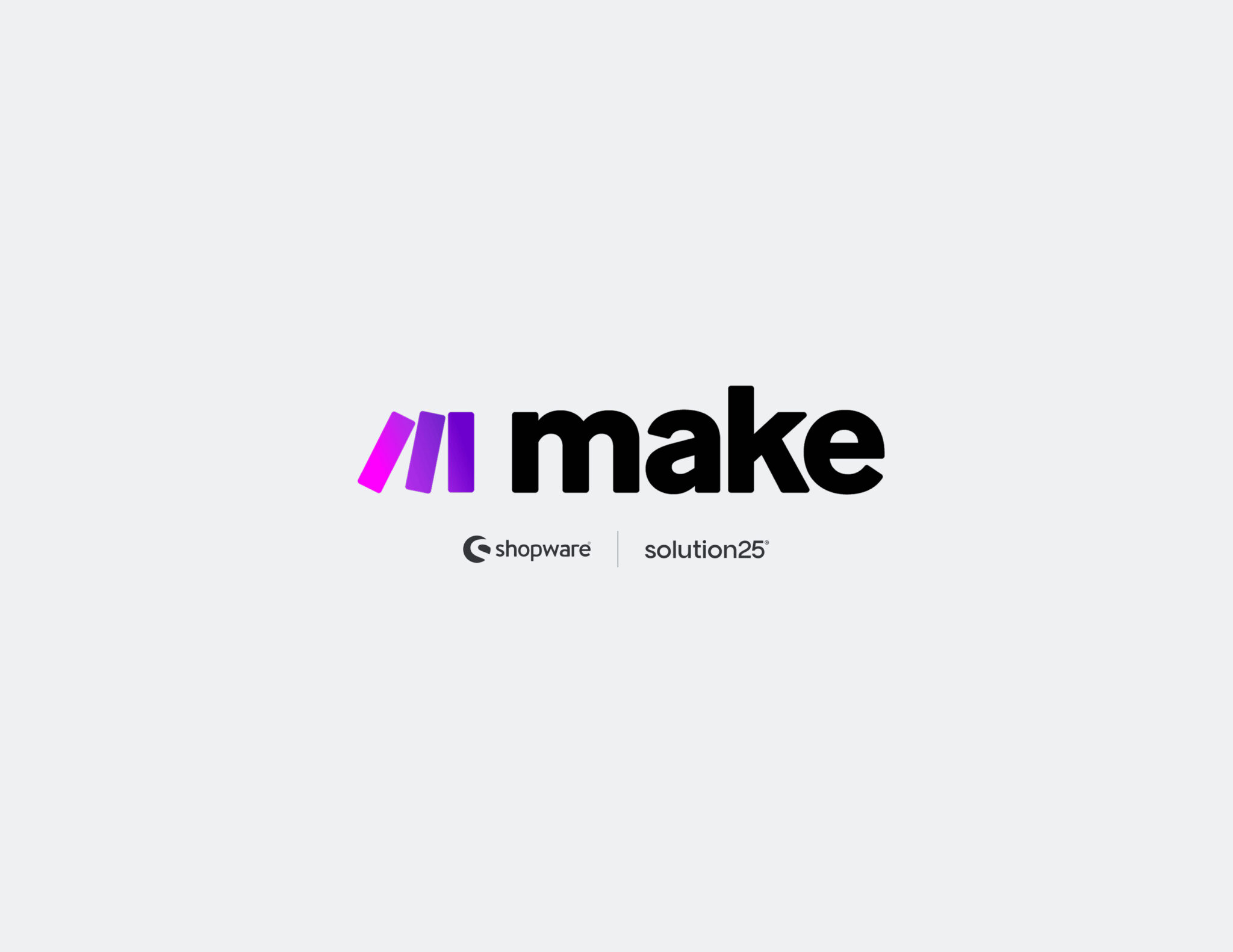Shopware Platinum Partner
200+ Projects
75+ Experts
Shopware Platinum Partner
200+ Projects
75+ Experts

A versatile no-code automation platform, Make (formerly Integromat) lets users visually design workflows that connect different apps and services. It enables you to streamline intricate business procedures, automate tedious tasks, and synchronize data across platforms.
One of the most effective and user-friendly tools for connecting your Shopware 6 online store to external services, such as CRMs (Freshsales, HubSpot), spreadsheets (Google Sheets), communication tools (Slack, Microsoft Teams), or even databases, is Make. You can accomplish this without knowing how to write code.
Make enables developers, marketers, and store owners to optimize their eCommerce operations with its extensive library of app integrations and user-friendly interface. Make enables you to create custom customer journeys, automate lead generation, and synchronize orders with accounting tools in a visual and modular manner. This minimizes human error and drastically cuts down on the need for manual data handling.
This tutorial will walk you through the process of integrating Shopware 6 with external platforms using Make. You’ll discover how to:
By the end of this guide, your store will be connected to an automated workflow that saves time and reduces manual work.
Make sure you have the following before you begin developing your Shopware 6 and Make integration:
Go to Make.com and register or log in.
After registering and logging in, you will be prompted to answer a few questions. The questions were as follows:
Then click Create a new scenario on your dashboard after logging in.
After connecting your apps, you will be directed to a visual editor. It supports hundreds of apps out of the box. Make’s scenario editor allows you to integrate all of your tools, whether you’re using Mailchimp to automate email follow-ups, Airtable to organize inventory, or a CRM to manage leads.
The HTTP or Webhooks module can also be used to integrate APIs that aren’t natively supported. This implies that you can even automate connections with less-popular platforms or internal tools.
Custom webhooks cannot be manually created or managed through the admin UI in Shopware 6. However, we can simulate webhook behavior by using Flow Builder to define a flow (based on an event, such as a new order) and set an action to “Call a URL.”
Make will serve as a webhook listener and can carry on the automation flow (for example, sending the data to Freshsales, Google Sheets, etc.).
+ symbol in the center of the blank canvas.You need to create a Flow that calls the Make webhook when a customer places an order in Shopware.
POST .order.orderNumber , order.customer.email , order.amountTotal , order.lineItems .Back in Make:
customer.emailorder.amountTotalTesting is crucial:
Make can automate full business processes:
You have total control over your workflows when you integrate Make with Shopware 6. Make automates tasks such as sending customer data to a CRM, notifying your sales team of new orders, or pushing reports to Google Sheets all without code.
In summary:
By following these steps, you can improve connectivity, decrease manual errors, and streamline operations in your eCommerce business.